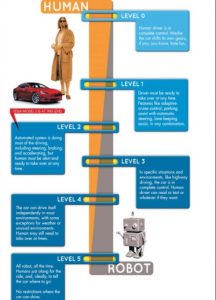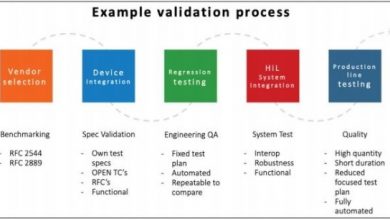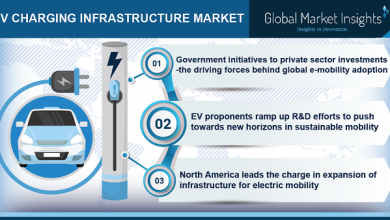Autonomous Vehicle – A Solution to Traffic Congestion
The pursuit of self-driving cars is well and truly underway, with the who’s who of automakers mostly targeting around 2020 or 2021 to roll out vehicles that are at least Level 3 automation (according to SAE International’s classification). Some, like Tesla, is even more ambitious with sights set on 2018 onwards.

It makes sense for automakers given the enormous market potential. Self-driving cars are the ultimate transportation dream inspired by decades of science fiction — once the technology is ready, no one will want a regular, boring car and the first to roll it out will have a distinct sales advantage.
However, leaving the development of autonomous vehicle (AV) technology to the private sector is unlikely to be a sustainable way forward, according to the International Association of Public Transport (UITP).
Unforeseen consequences
At the heart of the potential issue is the inherent interest of automakers in promoting personal car ownership. A future with fully developed AV tech driven by automakers may simply see cars today be replaced with self-driving alternatives.
That is not a sustainable scenario, according to UITP, as the added convenience, safety and comfort of AVs would even encourage a surge in vehicle ownership. The logical conclusion is a future where everyone is well-incentivized to own a self-driving car.
In other words, AVs would compete, not complement, public transport. It would be a critical problem for the world’s growing population centers, which are now moving towards transit-oriented developments and growing public transportation networks — essentially pushing for car-lite mobility to improve urban liveability.
Therefore letting commercial interests drive the pursuit of self-driving cars without public sector influence may create trouble down the road from booming personal car ownership, evolving road networks and traffic issues, especially given how some self-driving cars being tested today are struggling to cope with existing road systems.

Government input crucial
Instead, it is crucial that AV technology development is spearheaded by the government. This will avoid conflicting priorities and ensure deep integration with public transportation networks in complementary, not conflicting, roles.
This approach is already seen in Singapore and the Netherlands, In February, the Netherlands removed legal barriers to testing AVs on real roads while the Singaporean Ministry of Transport has also publicly outlined its vision for an AV-driven future.
This is arguably a more sustainable approach towards promoting affordable AVs — government support for start-ups focusing on AV technology to enable Level 4 and Level 5 autonomous driving.
Start-up advantages
Working with start-ups, as opposed to automakers, presents some crucial advantages for the government. The first is speed and focus — their small sizes and founder-driven ideals mean less bureaucracy and more focus in respect of innovation, idea development and implementation.
Second, being start-ups also mean these companies are lean and nimble, with natural interest in looking for cheaper ways to make AVs compared to automakers who would be incentivised by their existing capacity to load any product with value-add to increase profits.
A third advantage is that many autonomous urban mobility start-ups are already naturally aligned towards public transport integration in terms of their core research and development focus, as seen with the following examples:
| Amber Mobility | Providing AV electric car sharing platform for commuters |
| OSVehicle | Open-source EV platform offering white-label AV solutions to transportation service providres |
| ST Kinetics | To roll out AV electric buses using designated lanes |
| Navya, EasyMile, BestMile | Using AVs to service short routes and provide first/last-mile connectivity |
| Uber, Lyft & Grab (ride-hailing companies) | Putting ride-hailing AVs on the road |
It makes a visible difference: Dutch start-up Amber Mobility, which enjoys local government support alongside other partnerships, is already planning to roll out self-driving cars on Dutch roads by mid-2018 that specifically caters to vehicle sharing.
Additionally, the Singapore government is now looking to roll out self-driving electric buses by 2020, a world first. The agreement between the Land Transport Authority (LTA) and ST Kinetics in April will see the buses operate along designated AV bus lanes.
Clock ticking
There is strong urgency for governments to start moving in this direction given that carmakers has had a headstart in forming partnerships with these companies, such as the recent BMW’s partnership with Intel, Mobileye and Delphi. A possible place to start is with OSVehicle’s EDIT, a heavily customisable self-driving vehicle that can be easily tailored to any market or country. Governments can easily adopt this model to customise into a self-driving public bus, for example.
Moving forward, a number of likely scenarios are set to manifest if the public sector takes action to ensure AV technology development is in sync with urban mobility evolution. However, the longer the AV technology development is left to be commercially driven, the more difficult it is to steer it back to align with public sector interests.
Among others, we would likely see disincentives to personal car ownership and usage via higher taxation and restrictions of entry into the city. Going by the Singapore example of special lanes for AV buses come 2020, personal self-driving vehicles may also be barred from using public roads that still see non-AV cars on them to avoid potential incidents.
Instead, there may be specific lanes designated for AVs, but these would likely be limited to commercial or utility-type (such as trucks) AVs due to space limitations. Automakers may also face some challenges in terms of rolling out AVs that comply with the likely varying safety requirements from country to country, especially if the bar is set much higher than it is today.



